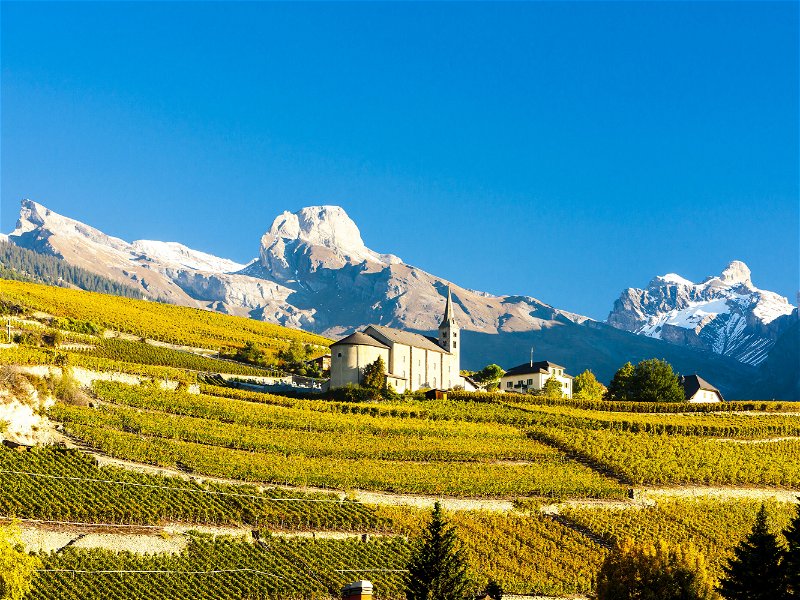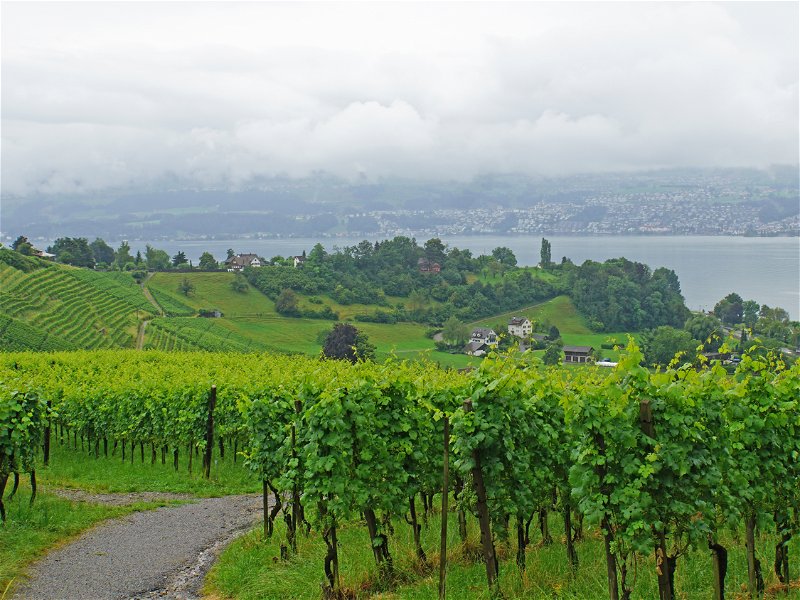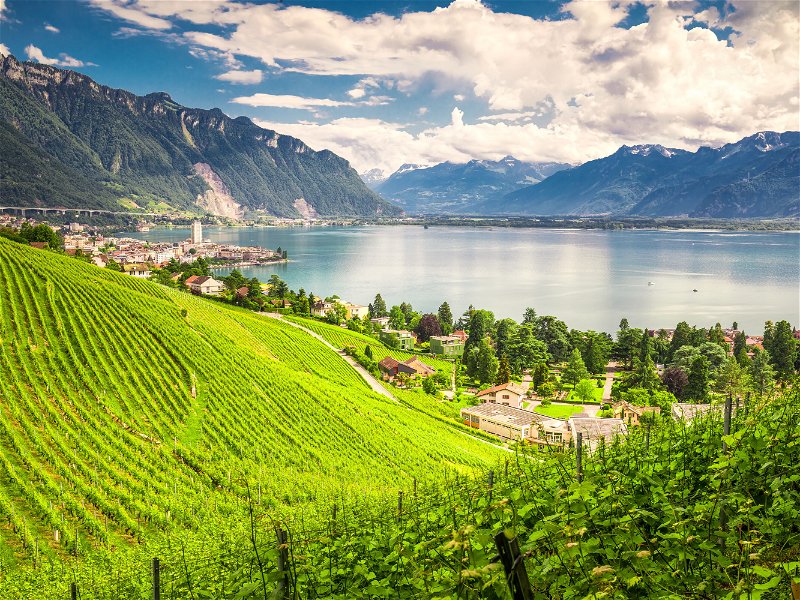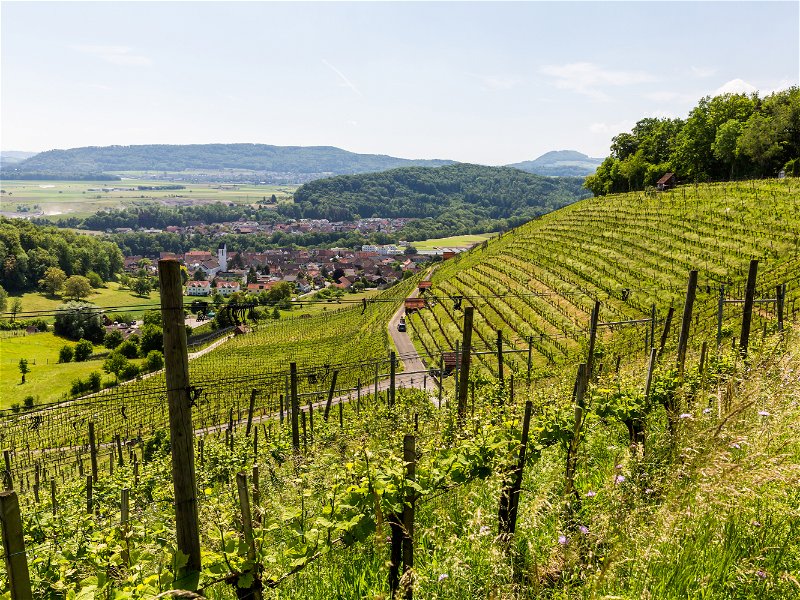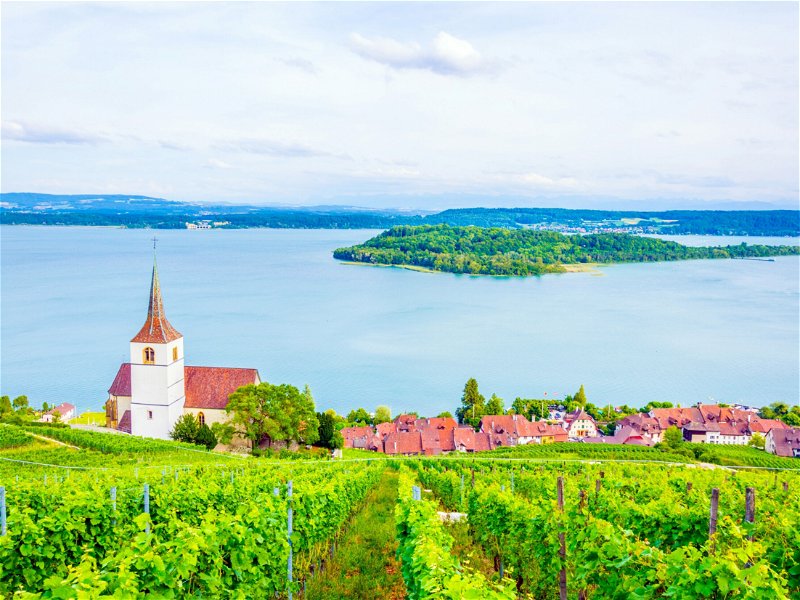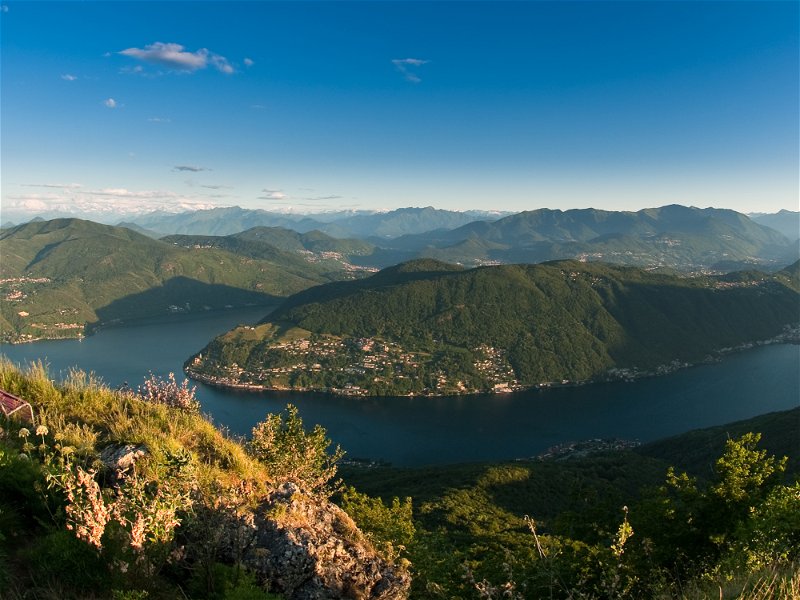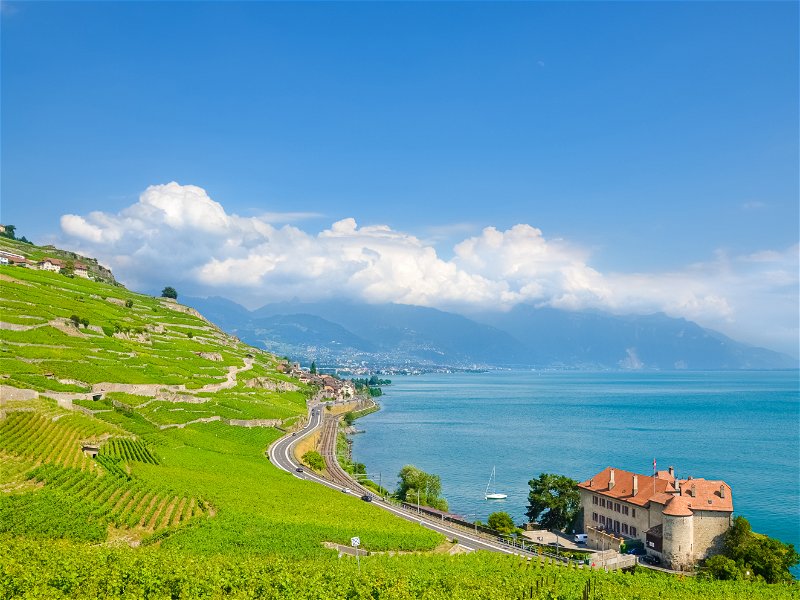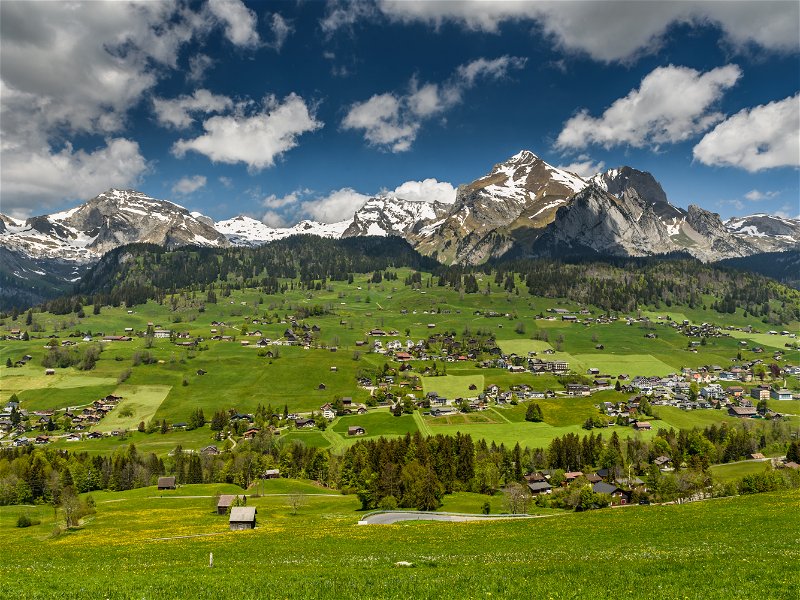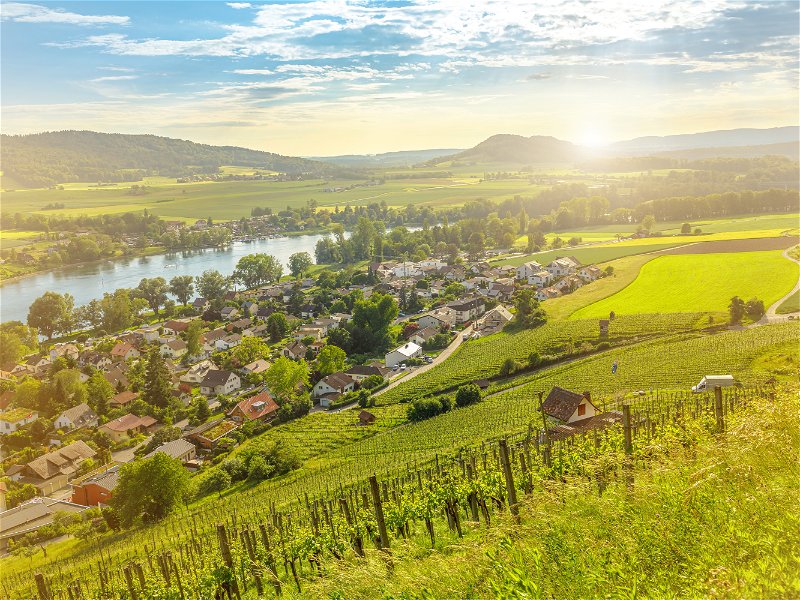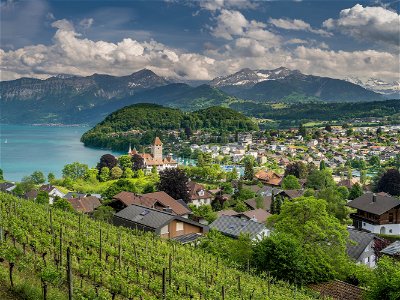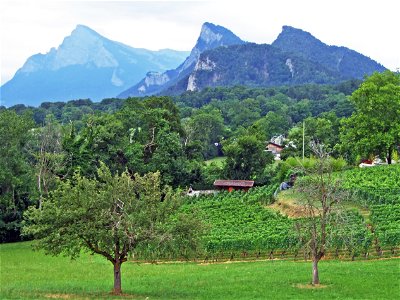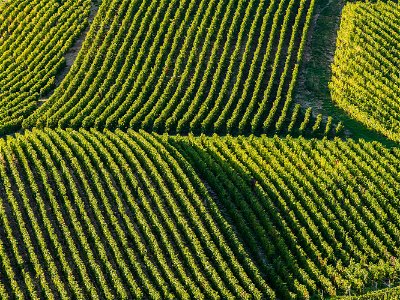With about 8.6 million inhabitants and an area of about 41,300 square kilometers, Switzerland is one of the smallest countries in Europe, but nevertheless has a lot to offer in terms of viticulture. The history of Swiss viticulture can be traced back to 800 BC. Of course, the country was also devastated by phylloxera at the end of the 19th century, which completely destroyed almost all vineyards. The rebuilding of the vineyards took place under the supervision of research institutes, which especially promoted the development of resistant grape varieties.
Today, from north to south and from west to east, almost 15,000 hectares are under vine, distributed through the 6 wine-growing regions of Valais, Vaud, Geneva, the Three Lakes Region, German-speaking Switzerland and Ticino, which in turn can be divided into sub-regions. In fact, about 200 different grape varieties are permitted for cultivation; among the most important and most cultivated are Chasselas, Pinot Noir and Gamay, but new varieties such as Gamaret or Garanoir also play a not insignificant role. Wines of the Heida and Petit Arvine varieties are considered specialties of Switzerland, and the Pinot Noirs from the Bündner Herrschaft even enjoy world renown thanks to the cult winemaker Gantenbein.
Switzerland's mild climate, which has developed primarily in the wake of recent climate change, is very conducive to viticulture in the country, and the hilly to mountainous topography offers a very diverse terroir for the different grape varieties. It is not known exactly how many winegrowers actually make wine; estimates are about 7000, with about 2500 making and bottling their own wine.
Domestic consumption of local wines is very high, so not too many bottles leave the country, and for this reason they are not exactly cheap, but worth discovering. The most famous wine abroad is the Chasselas, a white wine that is often still produced and bottled with a malolactic fermentation.
Depending on the canton, Swiss cuisine has many specialties to offer. The most famous are the beef dish "Züricher Geschnetzeltes", the potato rösti and of course the cheese fondue. In addition, cities like Basel, Bern or Zurich offer a diverse gastronomic scene with numerous star restaurants. Chefs such as Tanja Brandits, Meta Hiltebrand or Andreas Caminada have made it to fame far beyond the country's borders.
Wine Regions in Switzerland
Canton of Valais
In Valais, Switzerland's largest wine-growing canton with 4,941 hectares under cultivation, the vineyards wind westward along the Rhone River through the warm, dry valley. In spectacular steep slopes, valuable autochthonous grape varieties and specialties grow alongside the main varieties Pinot...
Kanton Aargau
In the canton of Aargau, wine is cultivated on almost 400 hectares. The growing area extends over many small municipalities, which are mainly located on exposed south-facing slopes in the main and side valleys. The main grape varieties are Blauburgunder and Riesling x Sylvaner.
Three lakes region
As the name suggests, the vineyards of the Three Lakes Region are located on three lakes: Lake Neuchâtel, Lake Morat and Lake Biel. They cover an area of 947 hectares and are distributed among the regions of Neuchâtel, Bern, Fribourg, Vaud and Jura. Pinot Noir is the most important red variety,...
Canton of Ticino
The Italian-speaking corner of Ticino is the Swiss home of Merlot. With a total area of 1,090 hectares, the variety, which originates from the Bordeaux region, covers 872 hectares. Pinot Noir, the native variety Bondola and Cabernet Sauvignon follow behind. Chardonnay and Sauvignon Blanc are the...
Canton of Geneva
Hidden behind the cosmopolitan city of Geneva, Switzerland's third most important wine growing region stretches towards the French border. The 1,400 hectares of vineyards are divided into three regions: "Mandement-Rive droit" between Vaud and the Rhone, with Satigny as the country's most important...
Canton of Schaffhausen
In the region of Schaffhausen, Pinot Noir is mainly grown, which is called Blauburgunder here. Riesling x Sylvaner is also grown in Schaffhausen. In addition to these two main grape varieties, Chardonnay, Pinot Gris (called Tokayer), Gewürztraminer, Räuschling and Kerner are also grown in small...
